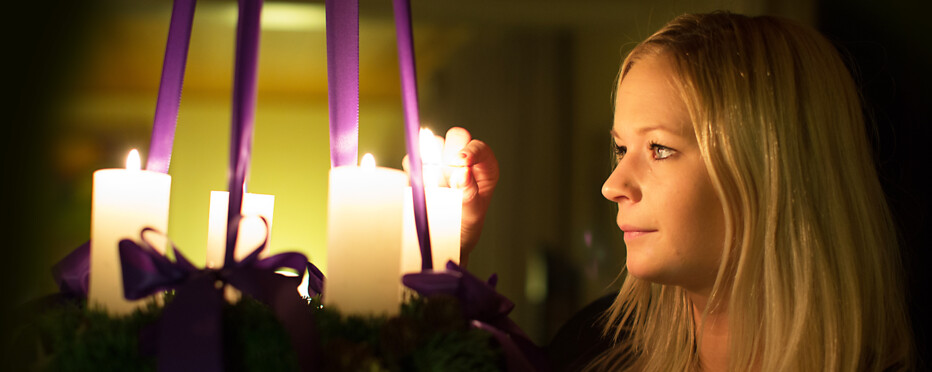Advent is a time of expectation and preparation
Advent (advent in Danish) begins on the fourth Sunday before Christmas Day. Advent means "coming" and is a time of preparation, anticipation and expectation of Christmas where we celebrate that Jesus, God's son, was born into our world. Many advent traditions in the Evangelical Lutheran Church are about looking forward to and counting down for Christmas.
While we are waiting
The advent wreath with its four candles (one for each Sunday), the nativity scene, the advent calendar with a "window" for each day in December leading up to Christmas and the calendar candle that has the numbers 1-24 painted on it, one for each day from December 1– 24, are all advent traditions. They allow us to count down for Christmas while expectations rise. The use of stars and candles for decoration are also among the advent traditions. This is because Christmas tells us that when Jesus was born, God lit a light in the darkness that comes from us.
In the past, advent was a time of fasting. The soul as well as the body was to be prepared to receive the message of Christmas.
Advent in the church
The liturgical colour of advent is purple, which symbolises penitence and preparation. At the church services we sing advent hymns and read texts from the Bible about the coming of Jesus and the expectations related to his birth. The first Sunday of advent is a holy day that marks the beginning of a new church year. Many churches have adopted the traditions of the advent wreath and the Lucia procession. Saint Lucy’s Day or the Day of Lucia (Luciadag) is December 13. A Lucia procession is a procession headed by one girl wearing a crown of candles or lights. The others in the procession, usually girls too, hold a single candle each.
In general, December offers many opportunities for Christmas concerts in the parish churches.



